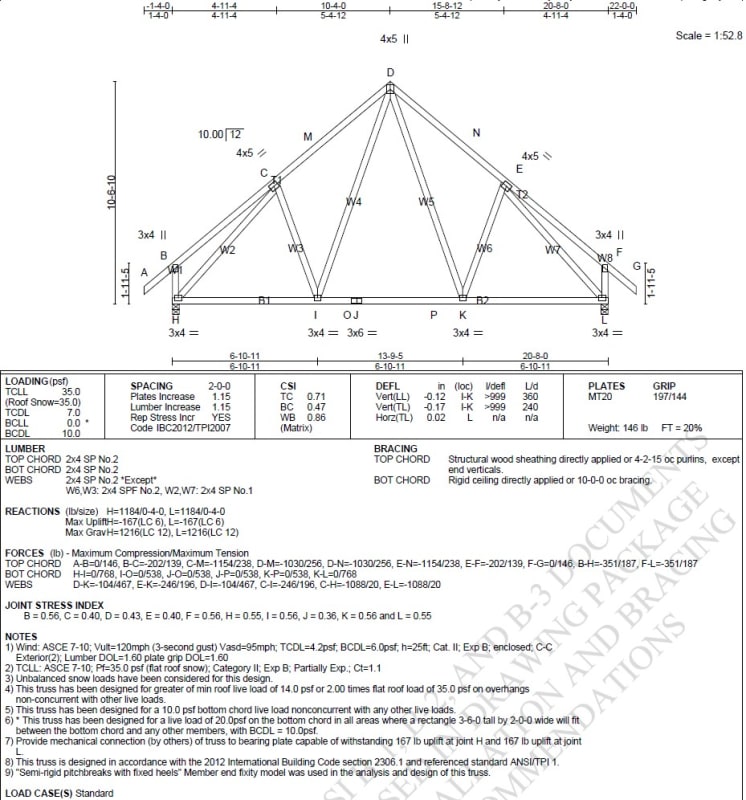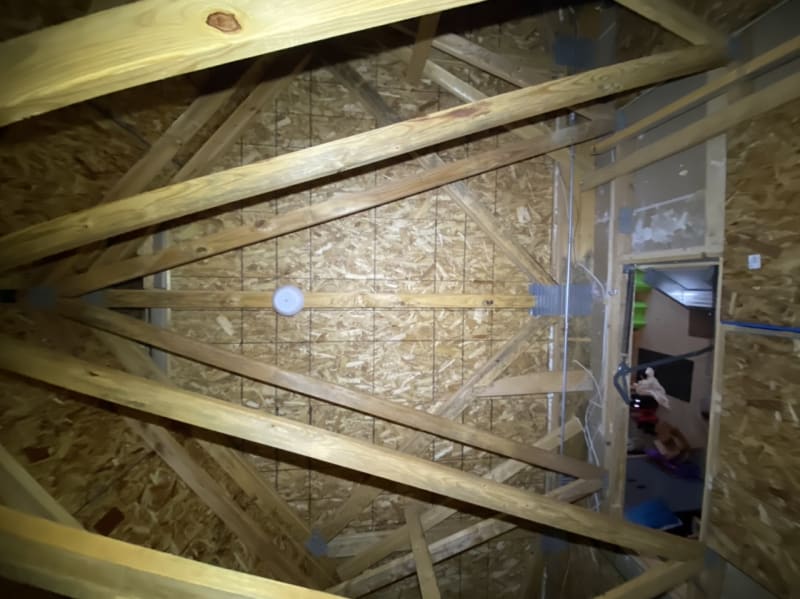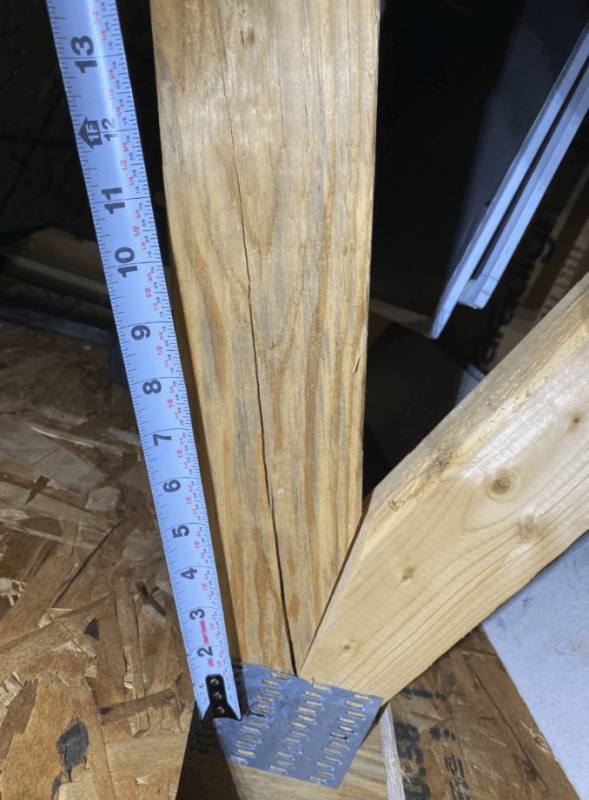antivenom
Automotive
- Aug 25, 2020
- 7
I'm converting the attic above my garage for light storage by adding flooring and a folding aluminum attic ladder. Also, I have an electric hoist I plan to install to haul storage items up there so I don't have to awkwardly carry them up the ladder. The attic area is about 20x20. The trusses are a fink with a raised heel(I think that's the correct terminology), 24" OC. They are designed for 10psf on the bottom cord and 20psf live load on the bottom cord in the center between the two tallest webs. I've attached the truss specs.
For the flooring I'm using 3/4 OSB T&G ([URL unfurl="true"]https://www.lowes.com/pd/23-32-CAT-PS2-10-Tongue-and-Groove-OSB-Subfloor-Application-as-4-x-8/1000065715[/url]). I've had to cut it into ~2' wide strips to get it up there easier.
Should I strengthen the trusses?
Specifically around where the attic ladder is installed and where I'll put the hoist. I haven't really figured out the best way to permanently mount the hoist yet. The attic ladder is ~50lbs. Link to attic ladder Link to hoist The hoist capacity is way over what I will ever lift up there. I don't plan to lift anything over ~75lbs.
Will sistering 2x4's the length of the bottom cord on each side of the attic ladder add any strength or will that just add weight?
Should I add gusset plates to any of the joints?
Also, I have discovered that one of the trusses has a split in the W5 web at the bottom, what would be the best way to repair it?
I can take some pics of that later if it would be helpful.
Thanks in advance!

For the flooring I'm using 3/4 OSB T&G ([URL unfurl="true"]https://www.lowes.com/pd/23-32-CAT-PS2-10-Tongue-and-Groove-OSB-Subfloor-Application-as-4-x-8/1000065715[/url]). I've had to cut it into ~2' wide strips to get it up there easier.
Should I strengthen the trusses?
Specifically around where the attic ladder is installed and where I'll put the hoist. I haven't really figured out the best way to permanently mount the hoist yet. The attic ladder is ~50lbs. Link to attic ladder Link to hoist The hoist capacity is way over what I will ever lift up there. I don't plan to lift anything over ~75lbs.
Will sistering 2x4's the length of the bottom cord on each side of the attic ladder add any strength or will that just add weight?
Should I add gusset plates to any of the joints?
Also, I have discovered that one of the trusses has a split in the W5 web at the bottom, what would be the best way to repair it?
I can take some pics of that later if it would be helpful.
Thanks in advance!



